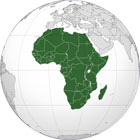Languages
Colors of pins used to locate languages give some more information:
• blue: Lacito languages with oral resources or more ;
• white: Lacito languages without oral resources ;
• yellow: languages with oral resources, but not studied by Lacito.
The Pangloss Collection is a freely accessible multimedia archive that brings together resources – especially audio – that reflect decades of fieldwork by Lacito and other researchers.
Pangloss currently hosts more than 3100 files, representing about 140 different languages spoken on the planet. Among these resources, more than a third are accompanied by textual annotations: transcriptions, translations, sometimes with interlinear glosses.
All these texts constitute valuable linguistic corpora, which can inspire and feed future linguistic studies.






 Africa and the Middle East
Africa and the Middle East Americas
Americas Asia
Asia Europe
Europe Pacific
Pacific